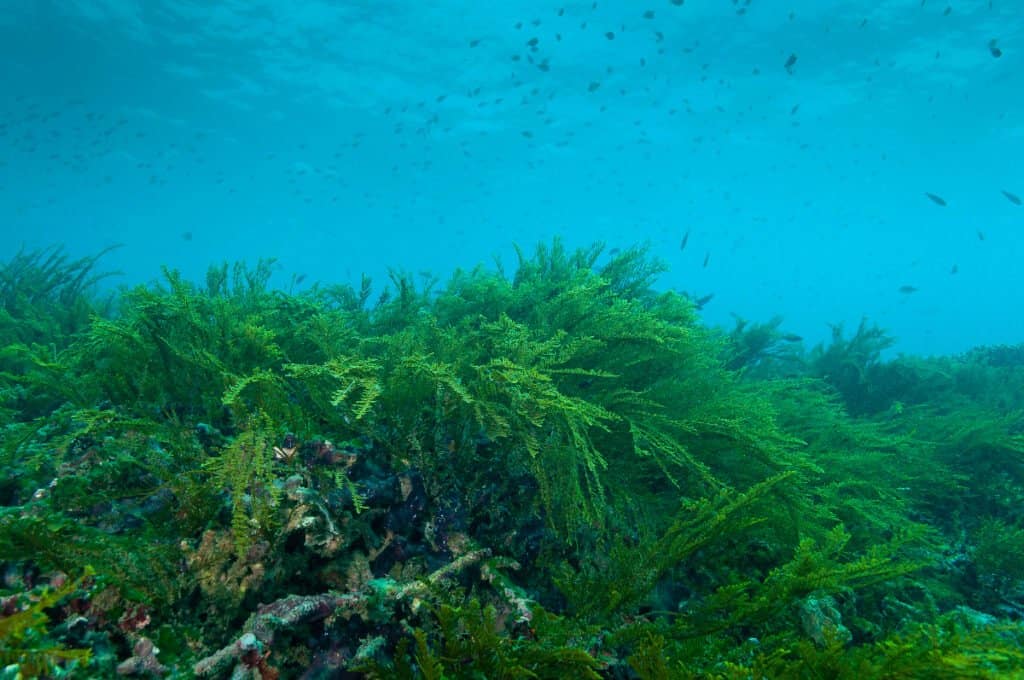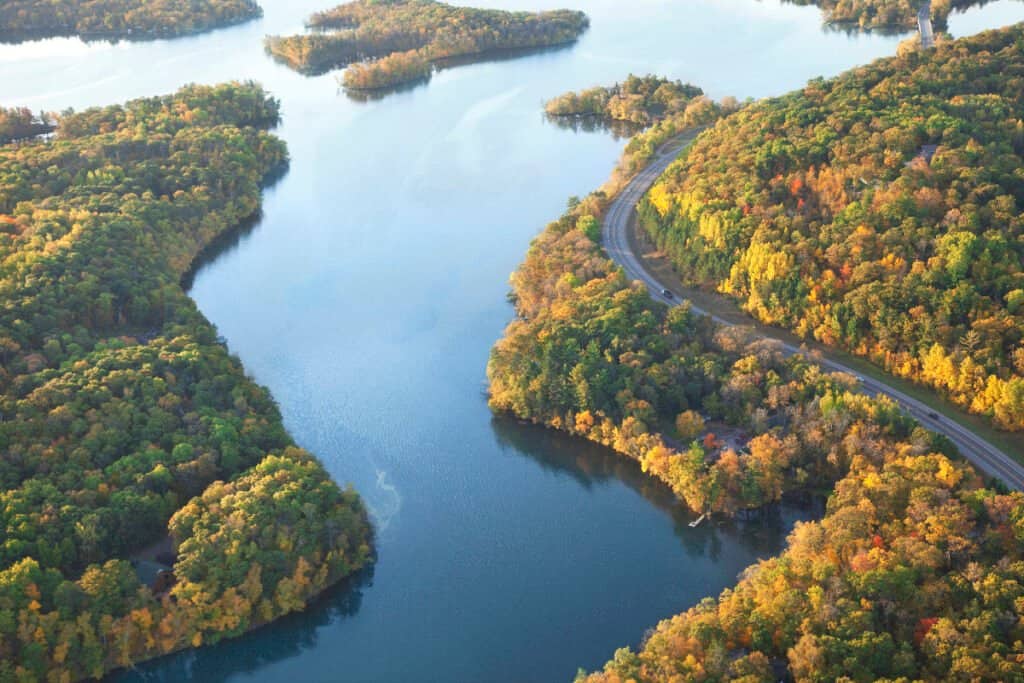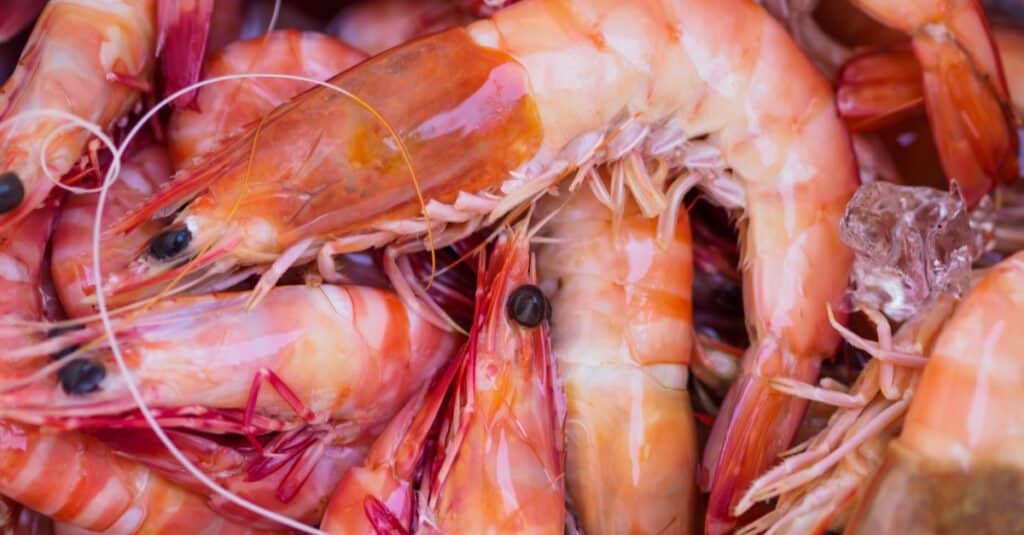Key Points:
- Eutrophication is a process that allows for the intense development of plant life such as algae and phytoplankton.
- Dead zones in bodies of water often result in fish kills or the absence of lifeforms that are typically present in that area.
- The size of the Mississippi River’s dead zone fluctuates, typically up to 5,400 square miles.
The Mississippi River is known as one of the most important rivers in the United States. It has been used for transporting goods, generating electric power, and contributing fresh water to cities like Baton Rouge, New Orleans, and more. Unfortunately, the river’s mighty flow brings more than water to the river’s mouth. Today, we’re going to take a look at the Mississippi River’s dead zone in the Gulf of Mexico to show you what causes it and how large it grows.
Spoiler alert: at times this “dead zone” grows larger than the entire state of New Jersey. Let’s dive into more details.
What is a Dead Zone?

Dead zones have an overabundance of seaweed and algae
©Jesus Cobaleda/Shutterstock.com
The term “dead zone” refers to a hypoxic area in a body of water. Hypoxic areas frequently develop in places where excessive nutrients and sediment enter the water. When greater-than-normal amounts of phosphorus and nitrogen flow into the water, the area becomes eutrophic. Eutrophication is a process that allows for the intense development of plant life such as algae and phytoplankton.
Large algae blooms limit the amount of oxygen available to the organisms below the water’s surface while also reducing the amount of sunlight that filters through.
Eutrophication leads to a low level of dissolved oxygen in the water, which makes it difficult for life to exist. Marine life needs oxygen to survive, so hypoxic conditions can prevent life from flourishing in certain waters.
Keep in mind that marine life is part of a food chain. When a significant portion of that chain cannot thrive in certain waters, the remaining sea life will move away to areas where they can find nourishment. Dead zones in bodies of water often result in fish kills or the absence of lifeforms that are typically present in that area.
Dead zones are not constant, though. They can fluctuate in size throughout the year. The processes that lead to the development of dead zones do not occur all the time.
What Causes the Mississippi River’s Dead Zone?

The Mighty Mississippi River runs through vast farmlands, and those farms use tons of fertilizers.
©iStock.com/Willard
The Mississippi River’s dead zone is caused by fertilizer runoff, commercial farming, sewage, and more. The Mississippi River is massive. It drains from portions of over 30 states, running through urban areas and farmlands alike. Eventually, everything that gets put into the river and its tributaries, along with the sediment typically carried by the river, reaches the Gulf of Mexico.
To be clear: the dead zone has more specific causes and impacts on various parts of the water column in the Gulf of Mexico. However, the simplest way to look at causes is to identify the products in the water.
Fertilizer runoff from farms and private homes is particularly harmful since it allows massive amounts of phosphorus and nitrogen to enter the river and, eventually, the Gulf of Mexico. Once there, it leads to the eutrophication of the coastal waters. The Atchafalaya and Mississippi River deltas are the most significantly affected areas, but of course, the main concern is the enormous output of the Mississippi.
Like other dead zones, the eutrophication of these waters reduces the biomass in the area. Over 70% of the United States’ shrimp and 60% of the country’s oysters are harvested in the Gulf of Mexico. Thus, the impact of the dead zone has the potential to be significant.
How Large is the Mississippi River’s Dead Zone?

The dead zone in the Gulf of Mexico has grown in size up to nearly 9,000 square miles
©Sean Pavone/Shutterstock.com
The size of the Mississippi River dead zone fluctuates, but is typically up to 5,400 square miles. In the past, the dead zone has reached the size of New Jersey. The dead zone in 2017 measured 8,776 square miles compared with New Jersey’s 8,723 square miles.
As we said before, the Mississippi River’s dead zone is not permanent. The dead zone’s size fluctuates throughout the year based on what is being put in the water. For example, most farms aren’t dumping fertilizer on their lands in the winter. During that time of year, the dead zone will shrink.
However, the 2017 measurement was the largest on record and falls in line with consistent increases in the size of the dead zone. As the size of the dead zone increases, so does the number and severity of problems associated with it.
The Impacts of the Gulf of Mexico’s Dead Zone

The number and quality of shrimp decreases when the dead zone expands
©burnettj/Shutterstock.com
Why does it even matter that there’s a dead zone in the Gulf of Mexico? Well, the causes of the dead zone are impactful to humans as well as wildlife. For one thing, the massive amounts of nitrates that flow into the Mississippi River water and later cause algae blooms have apparently been linked to a higher incidence of cancer in humans. Remember, the Mississippi River is an important source of drinking water for millions.
Further, the dead zone itself can outright kill creatures that are not great swimmers, like oysters. Low oxygen levels in the water also force marine animals out of their typical living areas, upsetting the food chain.
Or, if we want to look at this as an economic matter, the dead zone can increase the prices of seafood goods across the board. Fishers will need to travel farther to reach the areas where fish have been forced to move, fewer fish will be available, and coastal fisheries will suffer. All of these things can increase the costs of obtaining seafood.
Fixing the Mississippi River’s Dead Zone

If farms are more careful with their waste, then the dead zone may shrink
©iStock.com/DutchScenery
Fortunately, just as human interactions have caused harm in this case, they can also provide a solution. Humans can help solve the Mississippi River’s dead zone in several ways, including:
- Encouraging farmers and homeowners to use less fertilizer and changing when they apply the fertilizer, so it doesn’t coincide with times of flooding and rain.
- Working to improve septic systems and sewage treatment plants to reduce the impact on surface water
- Creating new processes to control the amount of animal waste that seeps into waterways
Each of these processes can help limit the amount of pollution that flows into the Mississippi and Atchafalaya Rivers. Changing them can reduce the size of the dead zone in the Gulf of Mexico.
The dead zone stemming from the Mississippi and Atchafalaya Rivers is a serious concern. As the size of the hypoxic area continues to break size records, states that border the river are coming up with new plans to solve the problem. However, solving this problem is going to require significant studies and changes. In other words, it may be years before meaningful, consistent decreases in the dead zone size are seen.
The photo featured at the top of this post is © Anton Balazh/Shutterstock.com
Thank you for reading! Have some feedback for us? Contact the AZ Animals editorial team.







